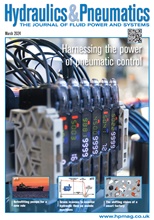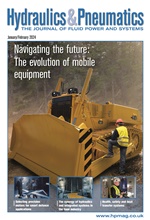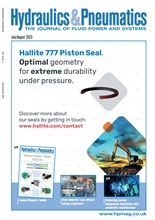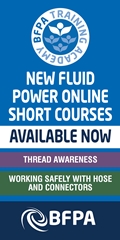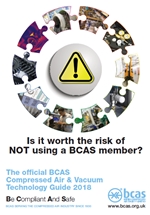Seven ways to extend the life of industrial hoses (Jan/Feb 2013)
By Leonie Waldron, marketing manager, Recoila.
Hoses are common place throughout industry, providing a practical and effective method for conveying or transferring liquids and gases.
External factors found in the working environment can have an adverse effect on the hose considerably reducing its life span – factors such as extreme temperatures, humidity, sunlight, oils, solvents, surfactants, welding spatter, corrosive atmosphere or exposure to aggressive chemicals.
Although industrial hoses are generally considered consumable items and will need replacing from time to time, properly managing, using and storing hoses will help reduce and in some cases prevent premature failure, and will in most cases increase their perceived life expectancy which in turn reduces high maintenance costs.
Some common workplace scenarios are:
- Hoses in factories are run over by forklifts or other machinery – this compromises the support structure within the hose.
- Hoses are bent and twisted into tight spots and develop kinks and bends – effecting the integrity of the hose.
- Hoses are left lying around or are dragged around a warehouse causing them to become damaged on abrasive floors and surfaces, damaging the outer protective layer.
- Hoses are left lying in highly acidic or alkaline environments such as food prep areas, which effects the hose.
- Hoses are contaminated by vegetable fats and animal fats – these attack and leach structural polymers and plasticisers from the hose.
Hose failure leads to bigger issues
Some of the more serious effects of improperly managed hoses can include damaged equipment, forced machinery downtime, injuries such as trips and falls, and much more serious injuries if high pressures, chemicals or hazardous substances are involved.
Getting the most out of your hoses
Take note of these tips to maximise the effective service life of hoses in your workplace.
- Ensure the hose you are using is right for the job. Using the correct hose for your application is crucial to ensuring you get the longest life and best performance out of your hose.
- Know what substances found in the work environment are likely to damage your hose. Often hoses manufactured from a particular material have excellent resistance to some chemicals or substances, and not so good resistance to others. Your hose manufacturer can help you with the specs for your particular hose.
- Inspect hoses regularly. Check the hose before using it – if you have any concerns about its suitability for the task, quarantine the hose, let your supervisor know, and follow your workplace safety procedures.
- Be aware of the hose’s natural bend radius. The bend radius is the minimum radius that a hose or cable can bend without kinking – your hose manufacturer can help you with this specification. If a hose is bent or twisted past its natural bend radius, the inner layers can be compromised which can cause splitting and failure of the hose. And if a hose is bent close to the end fitting (as shown in the above photo), the hose barb can scratch or pierce the inner lining resulting in a damaged hose.
- Keep them away from extreme heat. Hoses that are used close to exhausts, motors and heat-emitting mechanical equipment may fail faster than those that are shielded from heat sources.
- Keep them out of the elements. Hose life can be maximised by storing hoses away from harsh sunlight in a clean, dry environment. Obviously, this isn’t always possible, especially in truck-mounted applications, however consider ways you might protect hoses that are used outside. Can a cover be installed? Could the hose be run along a different path that is more protected? Can the hose or hose reel be mounted inside a frame or box?
- Store hoses correctly. Hoses stored neatly up off the ground are likely to stay cleaner for longer, and are less likely to be damaged by vehicles and environmental factors. Using a hose reel can increase the life of hoses, as well as creating a safer, more productive working environment.
As always, it is best to contact your hose manufacturer for further information on your particular type of hose.
[Photo caption] The holster for this fuel nozzle is mounted too close to the hose reel. When the nozzle is placed in the holster it causes a kink in the hose.
Events
-
Smart Manufacturing & Engineering Week
05 - 06 June, 2024
NEC, Birmingham -
HILLHEAD 2024
25 June, 2024, 9:00 - 27 June, 2024, 16:00
Hillhead Quarry, Buxton, Derbyshire UK



